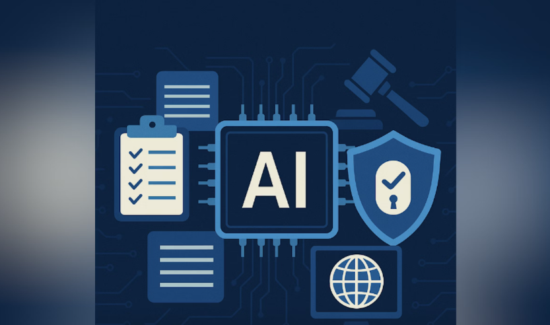AI-Powered Cyber Threats: A CTO’s Perspective on Next-Generation Threat Intelligence


Prasobh Veluthakkal, Focaloid Technologies‘ CTO, provides his perspective on the next generation of threat intelligence and AI-powered cyber threats. This article originally appeared in Insight Jam, an enterprise IT community that enables human conversation on AI.
 In 2025, the cybersecurity landscape will have taken on an entirely different level of sophistication: AI and machine learning will be the future attack vectors, and teams will need AI to master them. As a technologist who experienced the transition from signature-based detection to behavioral analytics, I see a significant shift in how attackers work, and our enterprise counterparts had better take notice. Recent industry intelligence shows a 19 percent climb in CISO concerns around AI-powered cyber threats, indicating that conventional security paradigms desperately need a strategic overhaul.
In 2025, the cybersecurity landscape will have taken on an entirely different level of sophistication: AI and machine learning will be the future attack vectors, and teams will need AI to master them. As a technologist who experienced the transition from signature-based detection to behavioral analytics, I see a significant shift in how attackers work, and our enterprise counterparts had better take notice. Recent industry intelligence shows a 19 percent climb in CISO concerns around AI-powered cyber threats, indicating that conventional security paradigms desperately need a strategic overhaul.
The Maturation of AI-Driven Attack Methodologies
The danger has progressed from traditional strike models into a more complex network of strategic, adaptive campaigns that use machine learning to seek the optimal target. Research shows that 62 percent of CISOs are now more worried about the social engineering threat vector—fuelled by AI—than they were in the past. This move presents a significant departure from the more conventional threat and highlights the impact of the threat being shifted away from a traditional perimeter focus.
Modern adversaries use generative AI to model massive datasets such as social media activity, communication patterns, or organizational structure and create attack vectors tailored to the victim from this information. However, these attacks work at scale, not at the level of one individual, which poses a serious threat to the conventional security awareness programs and human detection. The fact that sophisticated AI tools are becoming increasingly democratized, as is evident by the provision of advanced AI plugins for Cybercrime-as-a-Service platforms, has lowered technical barriers, allowing actors with basic AI knowledge to wage high-level attacks such as those carried out using FraudGPT and WormGPT.
Worst of all, the development of adaptive malware that uses machine learning to adjust behavior in real-time. By monitoring the efficacy of the defenders’ reactions, they tweak how they attack and operate at certain times when capture is ineffective. Conventional signature-based detectors are insufficient to detect polymorphic malware, which changes its code signature continuously to escape static analysis.
Intelligence-Driven Defense Architecture
Today’s increasing threats are not addressed using reactionary campaigns but result from proactive drivers likely to appear in new, disruptive, and strategic cyber events. Successful, resilient organizations have implemented continuous behavior monitoring that establishes a set of baseline patterns of network, application, and user activity. They use machine learning algorithms to analyze minor variations that could indicate a breach, such as spikes in entropy or irregular communication that portend the arrival of advanced persistent threat attacks.
Nowadays, threat intelligence platforms can ingest unstructured data from different sources, including dark web forums, social media channels, and global threat feeds, and correlate these separate indicators of compromise. With natural language processing power, security professionals will digest operational-level data from a sea of data about early warning for attack campaigns before they reach critical infrastructures.
The more sophisticated environments complement automatic responses with human decision-making, to ensure tactical decisions taken under the pressures of an attack are still in harmony with broader strategic perspectives. The ones that are the most aggressive in applying AI with cybersecurity operations are banking about $2.2 million, partly thanks to quicker response time than what they are used to without AI and better threat detection, on average.
Regulatory Compliance in the AI Era
The regulatory landscape has evolved significantly, with frameworks like CERT-In’s 2025 guidelines mandating comprehensive Bills of Materials (BOMs) that extend beyond traditional software components to include cryptographic elements, AI models, and hardware dependencies. These requirements demand visibility into entire technology stacks, including third-party integrations and cloud service dependencies.
Organizations must now implement continuous audit readiness, maintaining real-time asset inventories that include AI model provenance, training data sources, and algorithmic decision pathways. The six-hour breach reporting requirement has created operational pressure for automated detection and response capabilities, as manual processes cannot meet these stringent timelines.
Strategic Imperatives for Technology Leadership
From our vast experience deploying enterprise security architectures, three key success elements stand out for organizations preparing for the next wave of AI-powered cyber threats. First, you need a unified threat intelligence platform that combines behavioral analytics with global threat data to provide predictive instead of reactive security trends. Such systems must be capable of automated correlation but keep humans in the loop for complex decision-making.
The second is that zero-trust architecture tenants should be enforced—you should assume compromise and verify all transactions regardless of their origin. This model is crucial for combating AI-driven attacks that impersonate human activity and take advantage of perimeter-based security models. Companies must architect a system where access requests are always authenticated and authorized based on real-time risk evaluations.
Third, organizational capabilities for balancing AI adoption with managing risks must be established following an overall governance framework. Technology risk management leaders must ensure AI deployments improve security posture while complying with regulations and maintaining operational resilience. This demands a partnership between security, compliance, and business functions to derive the proper guardrails around the deployment and management of AI systems.
Conclusion
The collision of AI and cybersecurity is the most significant challenge and the biggest opportunity for enterprise technology leadership. Success is only possible with a threat-informed defensive and offensive strategy, including enterprise solutions and an organization committed to constant evolution. Companies that strike this balance will enjoy serious competitive advantages in the digital business world.


















